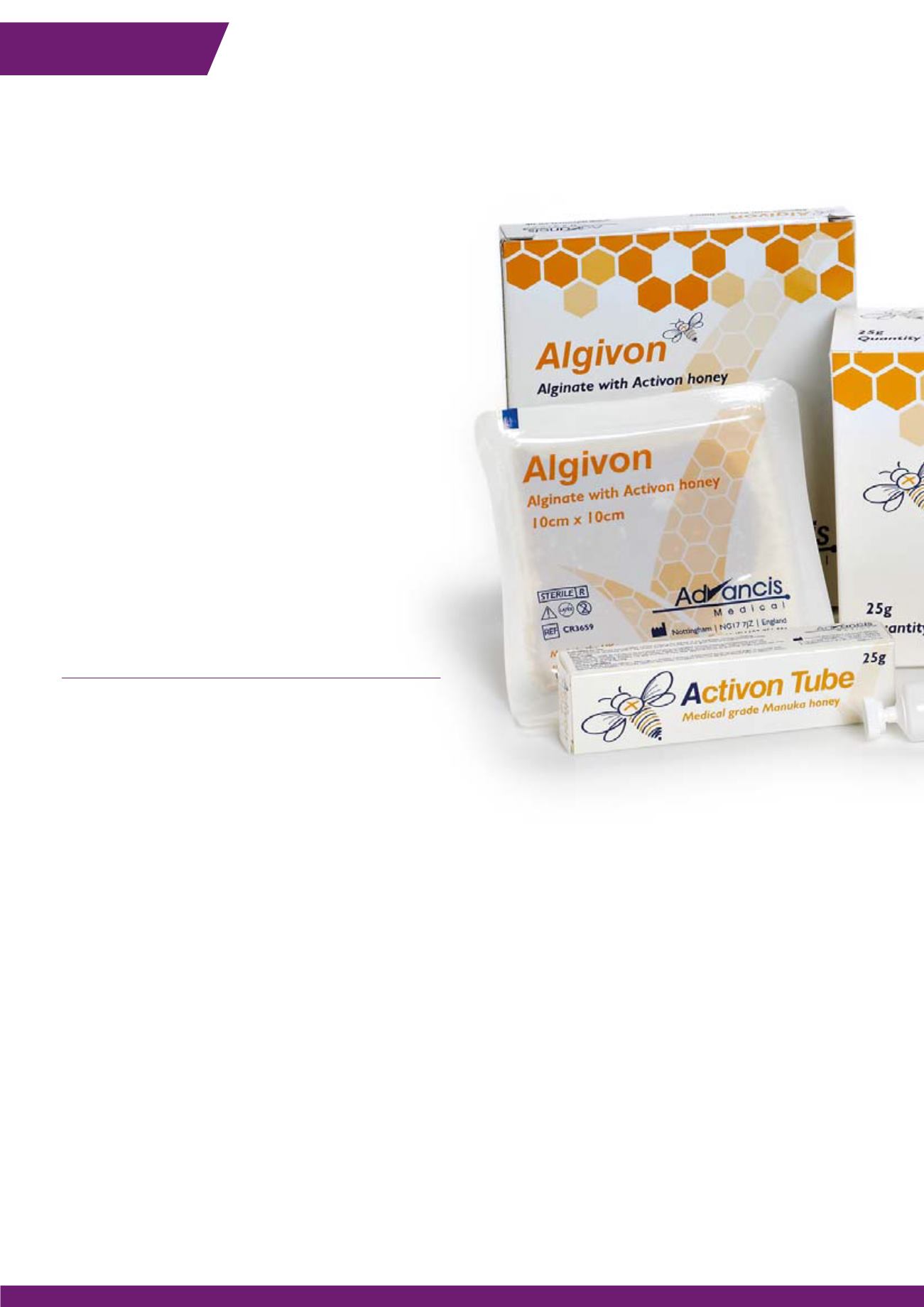
6
Call our Customer Service Team on:
01939211200
WoundCare
TheDressingsCollection
WoundDressings
The nectar collected from the LeptospermumScoparium tree, which is
part of the Tea Tree family, is convertedby bees into theManuka
Honey. This honey has an additional phyto-chemical antibacterial effect
due toproperties transferred from the nectar. This valuable addition
helps to ensure prolonged antibacterial activity.
Why useMedical Honey?
TheUniqueManuka Factor is a standardised rating indicating the
antibacterial potency of the honey and indicates antibacterial
properties over and above that of the peroxide activity, inwounds a
UniqueManuka Factor of 10 or above is recommended.
ActivonMedical GradeManukaHoney (UniqueManuka Factor +12) is
filtered and gamma sterilised to ensureminimal particulate and
bacterial contaminationwhilstmaintaining functionality.
When touseActivon
TheActivon range ismost suited towounds that are infected or highly
contaminatedbut can be used on all wounds tomaintain amoist
environment as shown below.
TheActivonRange
ActivonMedical GradeManukaHoney
(UniqueManukaFactor +12)
Honey is an ancient remedy that has been used to treat
wounds for over 2000 years. Many therapeutic properties have
been attributed to honey including:
• Antibacterial
• Autolytic debridement
• Wounddeodorising
• Stimulation of the growth of tissues
• Anti-inflammatory activity includingpain and
oedema reduction
• Maintenance of amoist wound healing environment
Activity
• The glucose oxidasewithin theManukaHoney releases very low
levels of hydrogen peroxide in thewound. This facilitates low level
release of oxygenwhich is thought to assistmonocyte and
macrophage function.
• The energy rich environment provides substrates for glycolysis
and supports the cells involvedwith repair, remodelling and
woundprogression.
• The high sugar content draws fluid andproteases from the
surroundingmicro-capillaries and tissue into thewoundbed via
osmosis. This helps to reduce inflammation and softenwound
debris aiding natural andpainless debridement.
• The oxygen release and high sugar environmentmake it difficult for
anaerobic bacteria to thrive, deactivating their activity.
Research byGeorgeWinter in the 1960’s pioneered
themoist wound healingprinciple stating that amoist
environment encourages essential cellular activity,
collagen formation and the vital contraction process.
Wounddressings have subsequently developed to
manage thewound environmentmore actively by
managing the factors associatedwith delayed healing.
Different woundswill require different dressings at
different stages of healing. Advanceddressings are
principally designed to either actively rehydrate a dry
wound or to absorb and retain excess exudate.
Dressings can alsooffer protection from further trauma,
andmanage infection and contamination.


